Last month Tom and I visited the Scandinavian Heritage Park in Minot, North Dakota. We had to take the Prius in for its 15,000 mile service and chose a Toyota dealership in Minot for the service. We had previously taken it to Dickinson and were pleased with that place, but we wanted to check out a new town.
Minot is the fourth largest city in North Dakota with a population of 50,000. This means that it is one of the retail centers for the state and has some good shopping. Having been to Billings the week before, however, Tom and I didn’t need to do much shopping. Instead, we decided to visit the Scandinavian Heritage Park.
Many of the Euro-American settlers in North Dakota were from Scandinavia and the towns in North Dakota celebrate this heritage. The Scandinavian Heritage Park in Minot is a collection of buildings representing all the areas of Scandinavia. There is a small museum, but the buildings and the other items in the park are the focus.

We started off in the Visitors Center, but were a little disappointed. It was mostly a gift shop and tourism center for Minot. There wasn’t much information about the Scandinavian settlers in the area. Because we are linear thinkers, we would have liked a timeline of settlement and notable events in North Dakota history. But we don’t always get what we want, and the buildings in the park more than made up for this lack.
We picked up a guidebook for the park that seemed to indicate a circular direction of buildings. We tried to follow this circular pattern but soon realized that the buildings really weren’t arranged in this order. Instead, we explored along the path and found the pages in the book that corresponded to where we were.
The Plaza Scandinavia was a large, beautiful work of art 65 feet in diameter. Each Scandinavian country was represented on a map in a different color of granite with a background of Norwegian blue pearl granite as the ocean. Can you name the five Scandinavian countries and their capitals? I will put the answer at the end of the post. The plaza also had a water-propelled, rotating globe of the world.
The Sondre Norheim statue was our next stop. Sondre is known as “the father of modern skiing” and was the first to design skis that curved in the middle, allowing easier turns. We also saw the Sondre Norheim Eternal Flame, which wasn’t burning so isn’t very eternal.
We went in the Sigdal House, billed as the “oldest house in North Dakota.” We were expecting a log or sod cabin transported from one of the North Dakota prairies. To our surprise, it was a small, log cabin from Sigdal Norway that is 230 years old. No one ever lived in it in North Dakota. But, it is, indeed, the oldest house in North Dakota, starting in 1991 when it was brought to the Scandinavian Heritage Park.
Tom and I looked at a replica stabbur, a storehouse for food. We saw the Casper Oimoen statue. Casper was a Norwegian who immigrated to North Dakota, became an American citizen, and then a ski-jumping champion. He competed in the Olympics in 1932 and 1936. We saw a Finnish sauna, a Danish windmill, and the Leif Eirikssen statue. The most recent addition to the park is the Hans Christian Andersen statue.
One of the most distinctive features of the Scandinavian Heritage Park is the 30 foot tall Dala horse. The Dala horse is the most recognized Swedish symbol. The huge horse is bright red with the typical flower-patterned saddle and harness. The Dala horse really stands out from a distance. The Dala horse is a carved handcraft from the province of Dalarna where locals carved the horses during the long winter evenings.

The centerpiece of the park, which can be observed from anywhere in the park, is the Gol Stave Church. This full-sized replica church sits on top of a hill in a place of honor. The church is 60 feet by 45 feet at the base and 60 feet tall. A stave church is a wooden design once common in northern Europe. The name derives from the building’s structure of post and lintel construction, where the load-bearing posts are called stav in Norwegian.
The Gol Stave church is a beautiful church with lots of gorgeous carved wood. The interior furniture is carved wood and there is an eight-foot wide carved “Last Supper.” The four huge stavs that support the detailed roof represent the four gospels, the foundation of all Christianity. Tom and I were impressed and awed by the work that went into building this church in Minot. We loved the wood construction and carving, feeling as if the church was made out of something living.
All together, Tom and I spent about two hours at the Scandinavian Heritage Park. We enjoyed the walk and seeing the examples of Scandinavian culture and architecture. It is definitely worth visiting if you ever travel to North Dakota.
Here are the five Scandinavian countries and their capitals: Helsinki, Finland; Stockholm, Sweden; Oslo, Norway; Copenhagen, Denmark; and Reykjavik, Iceland.


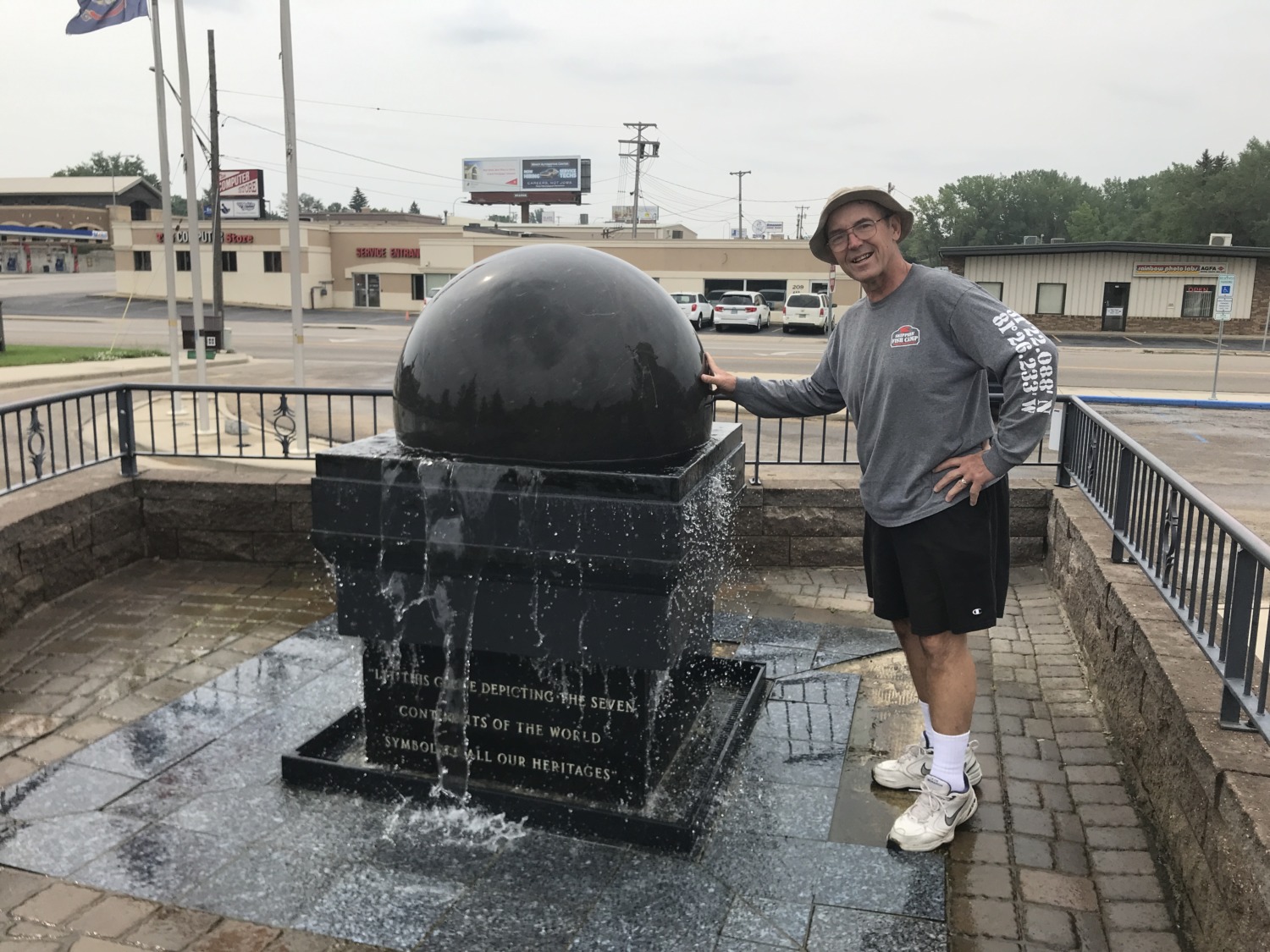
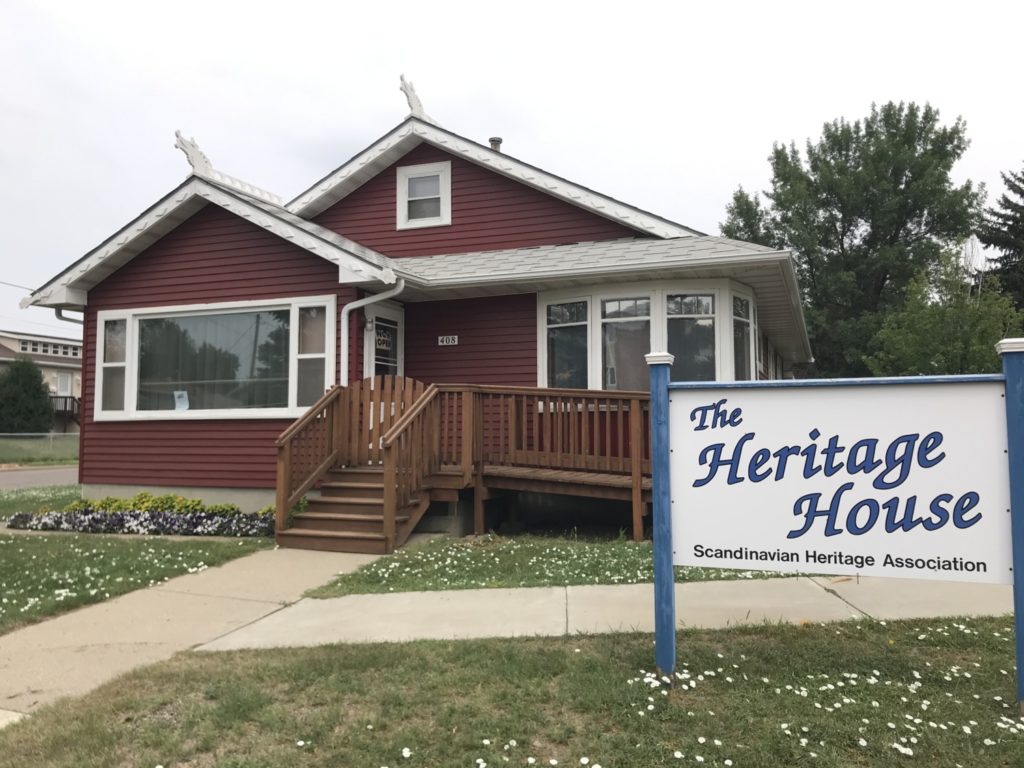
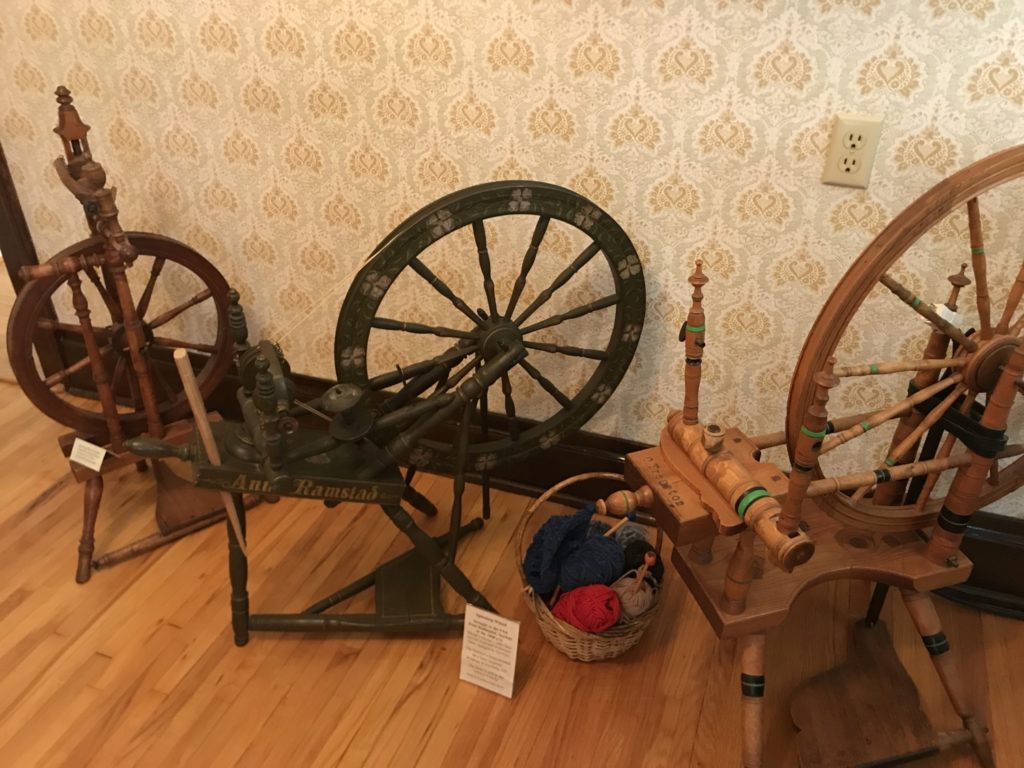
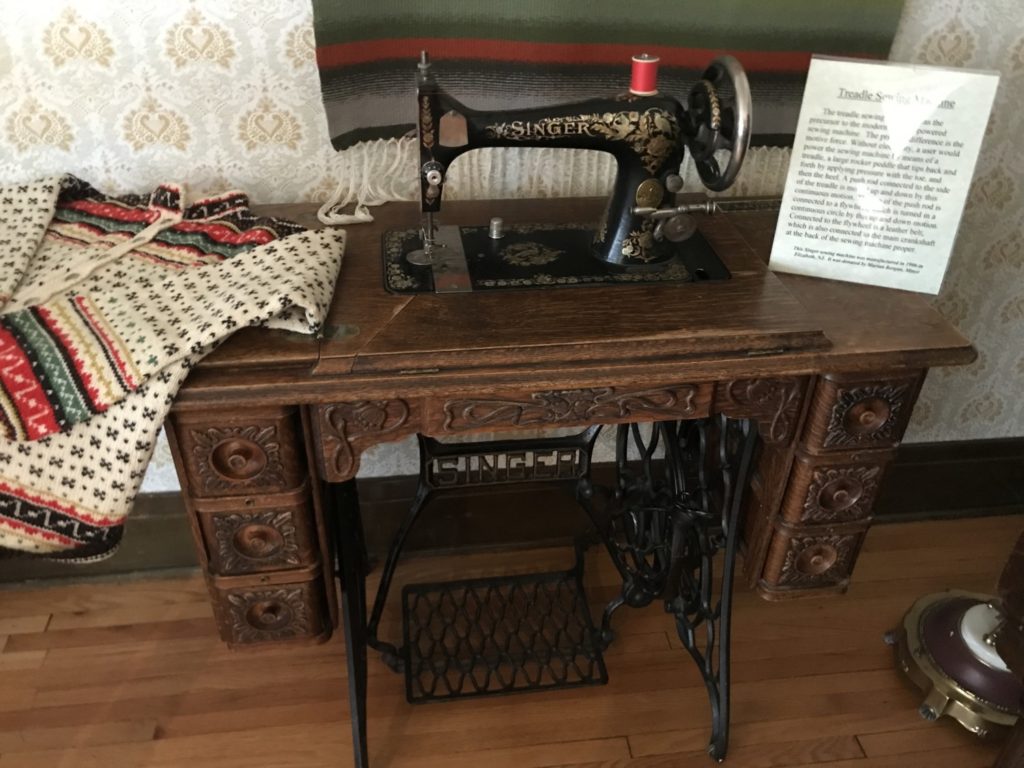

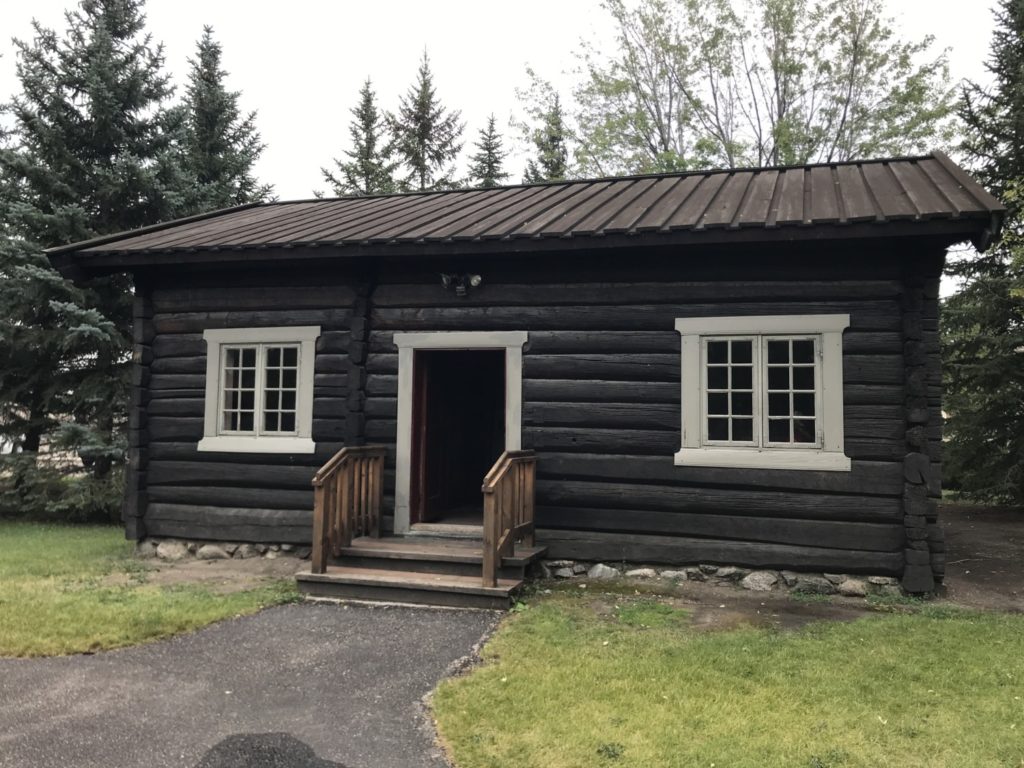
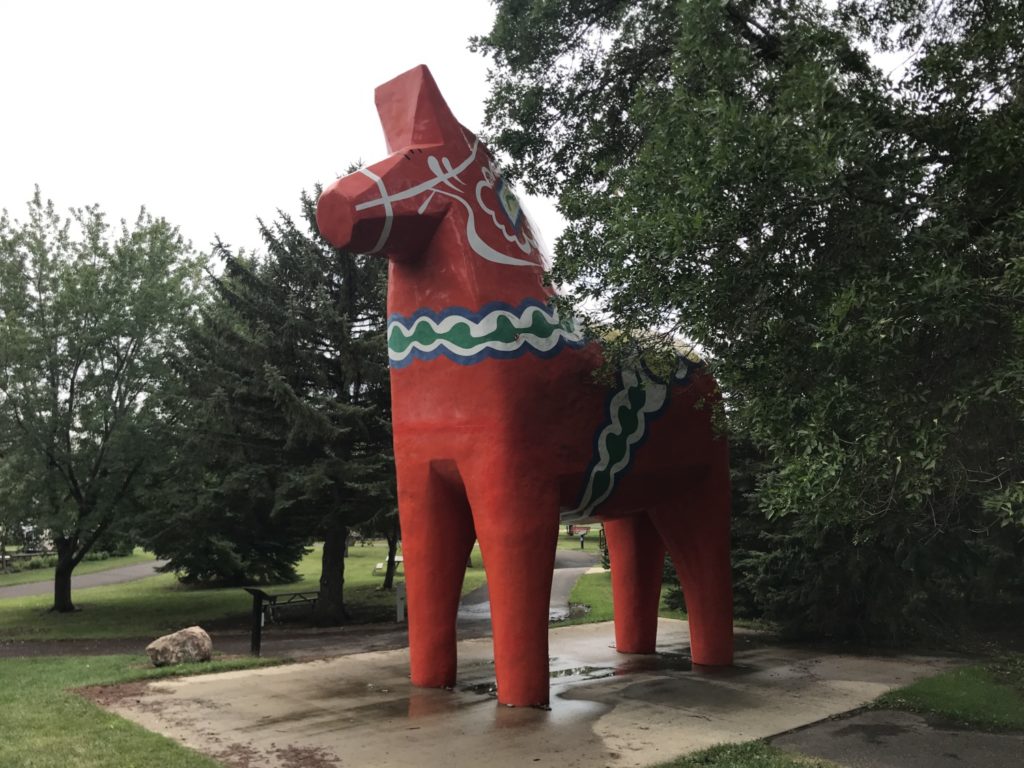
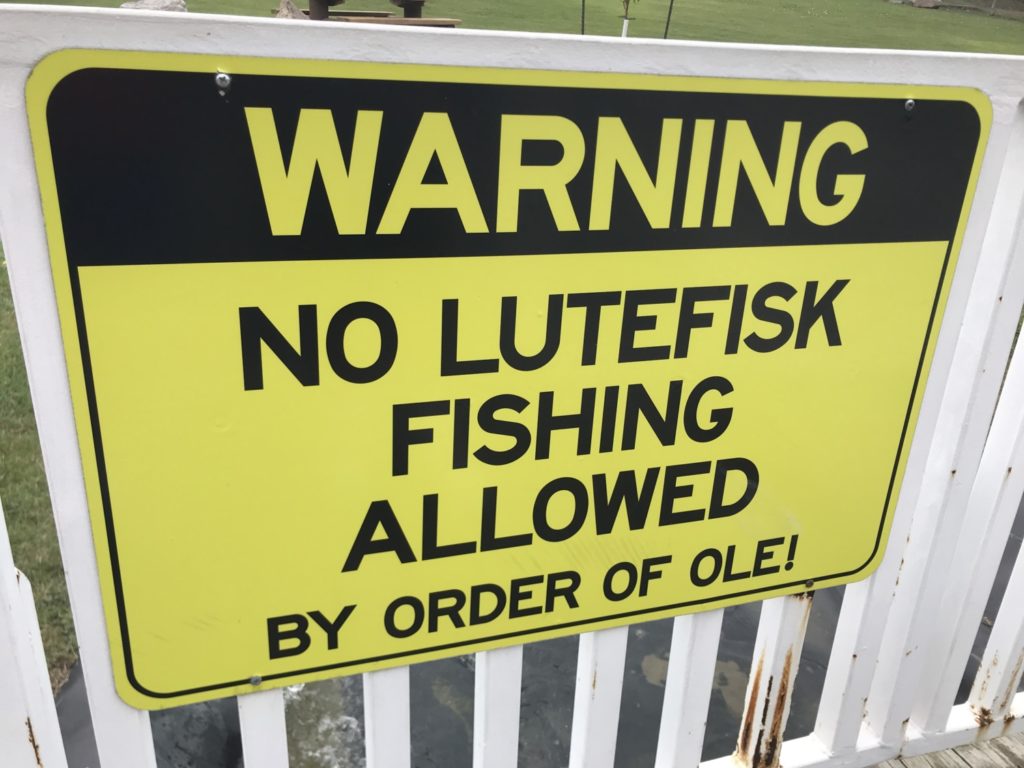
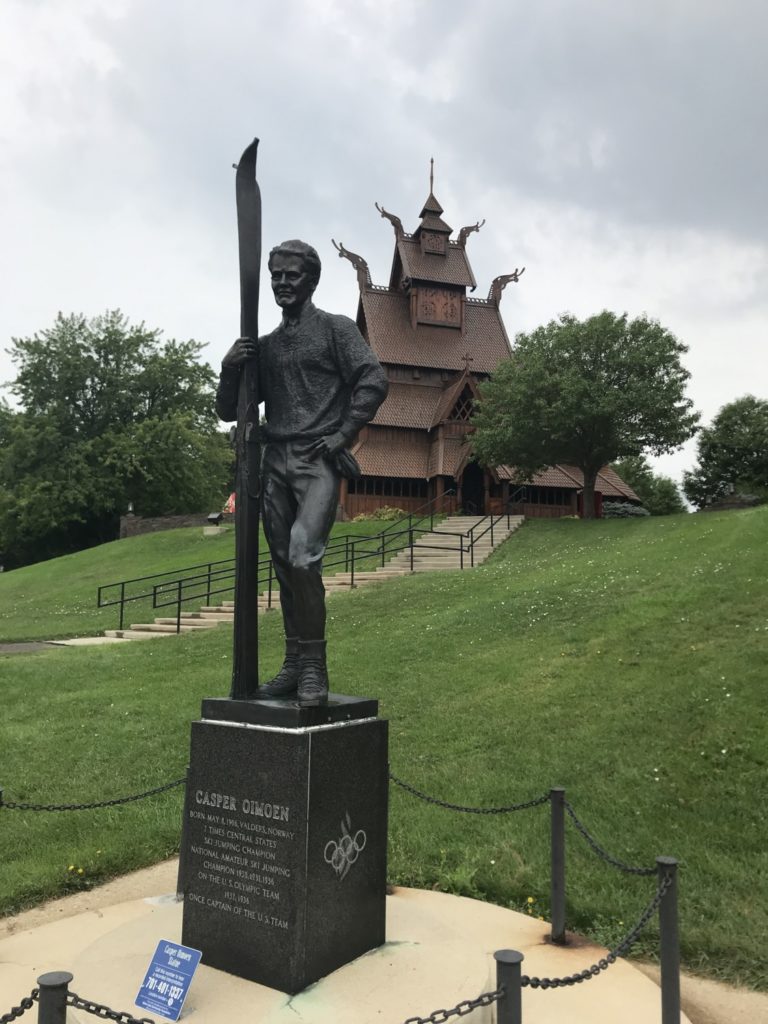
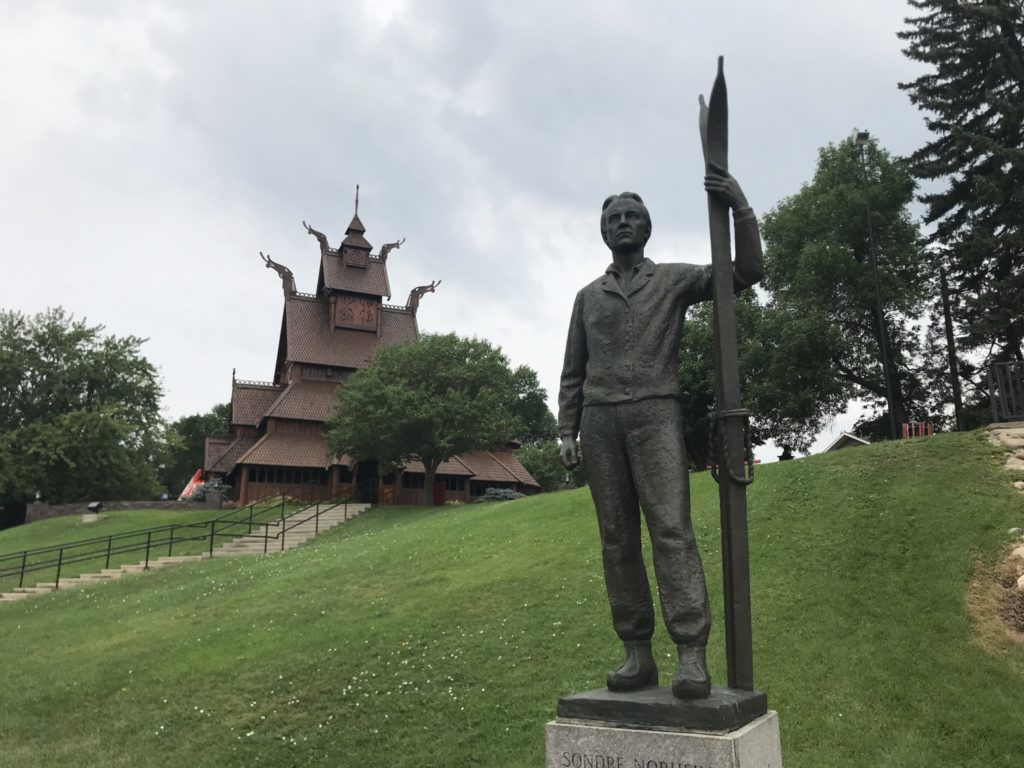
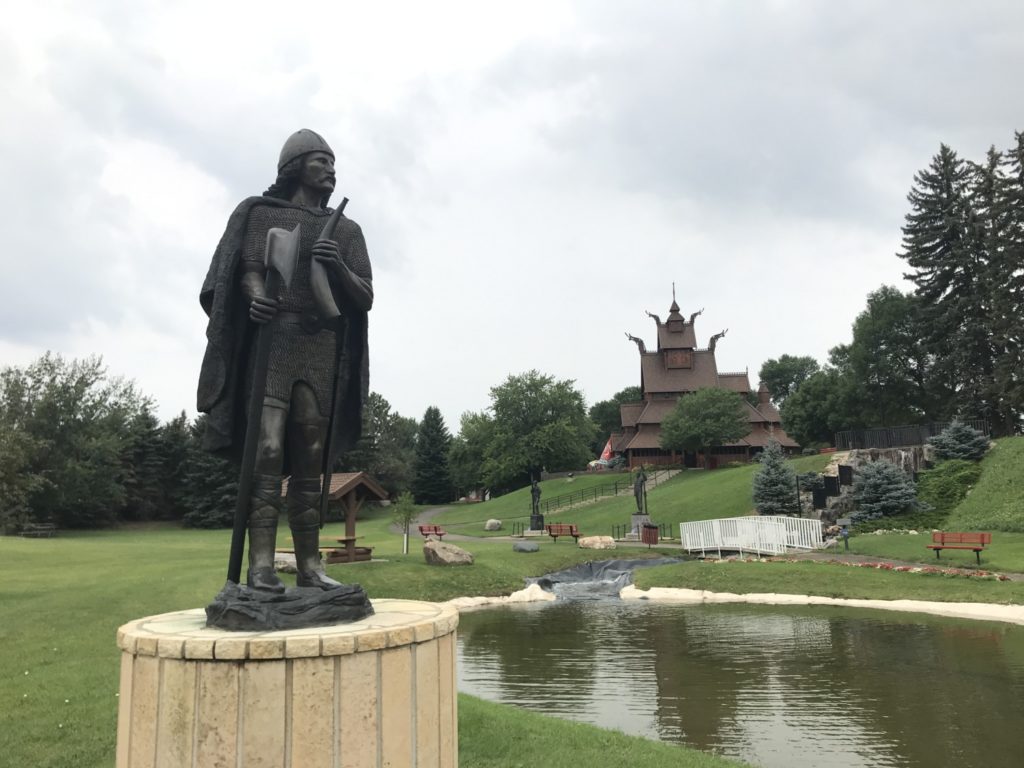
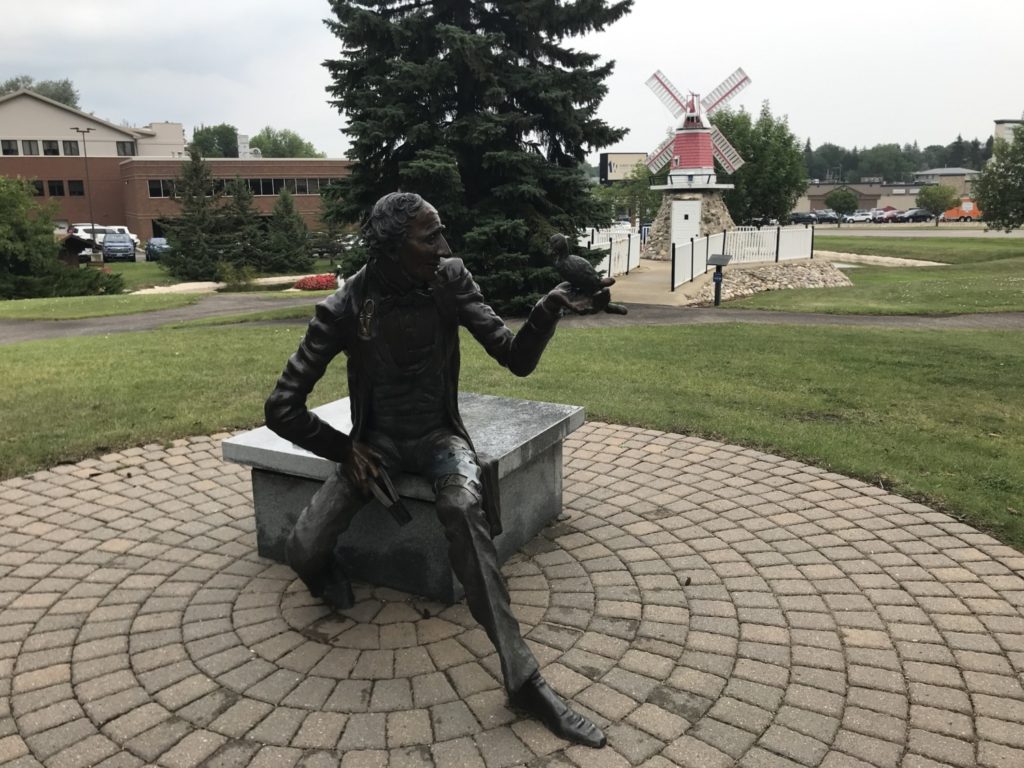
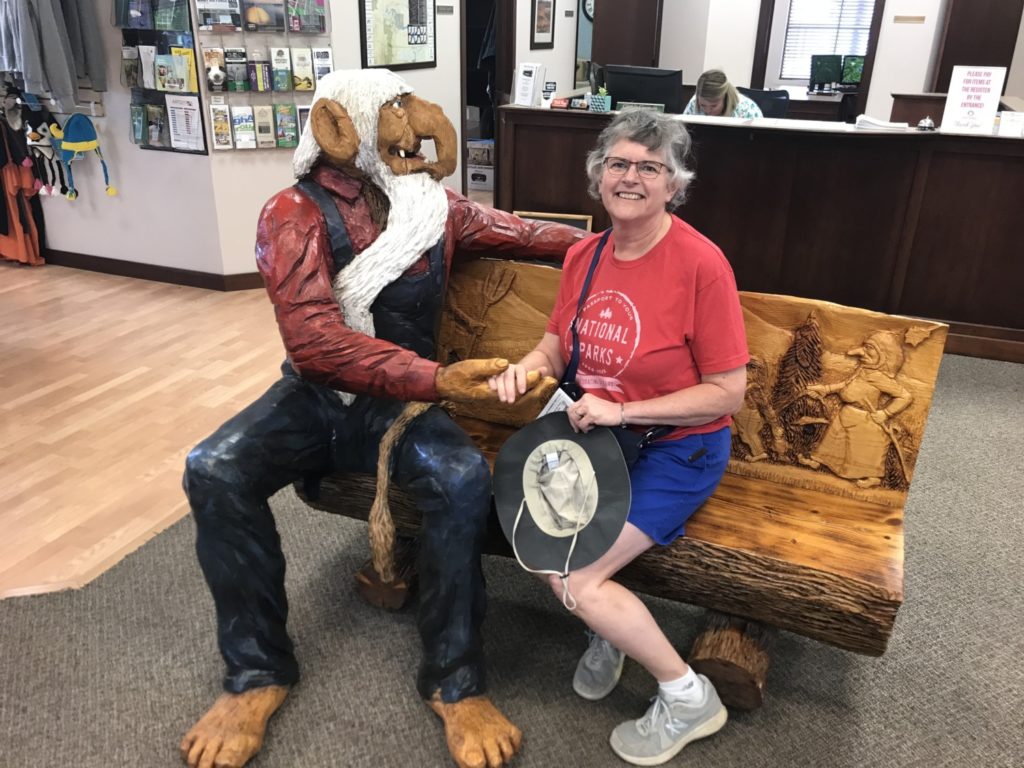
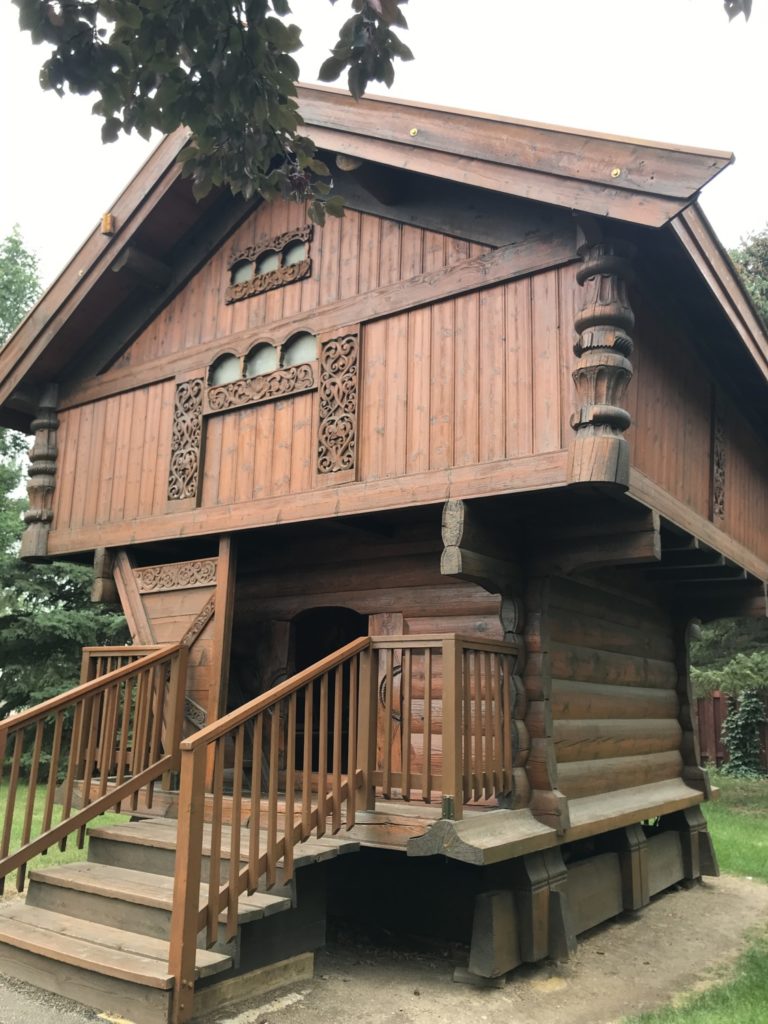
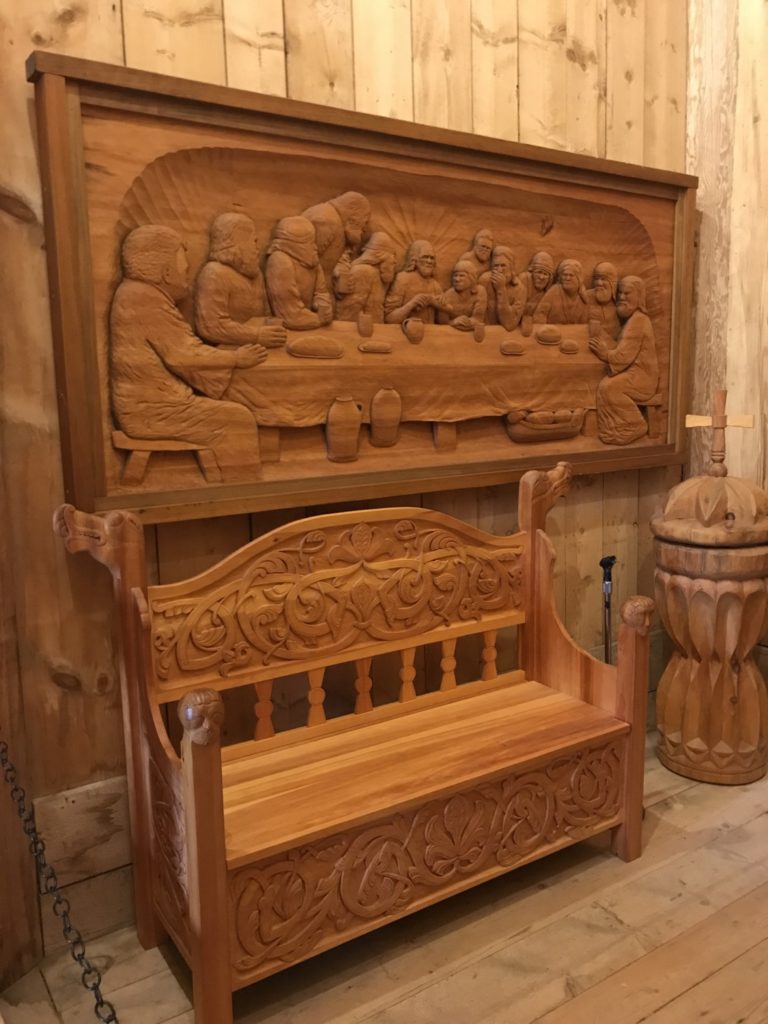
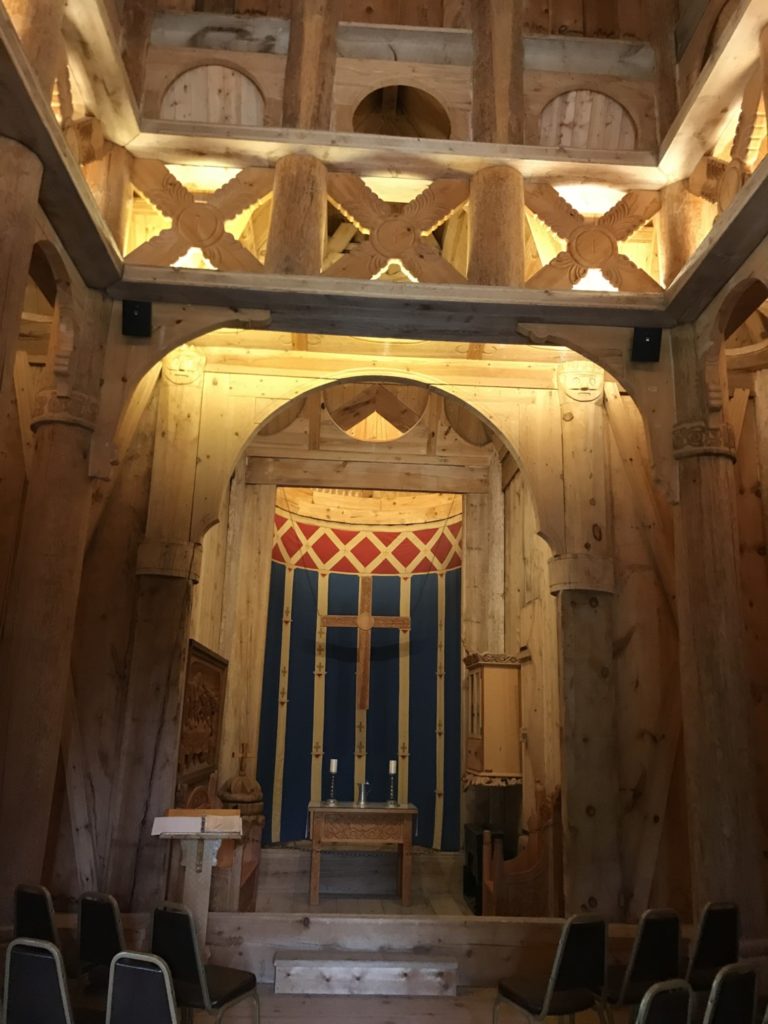
One comment